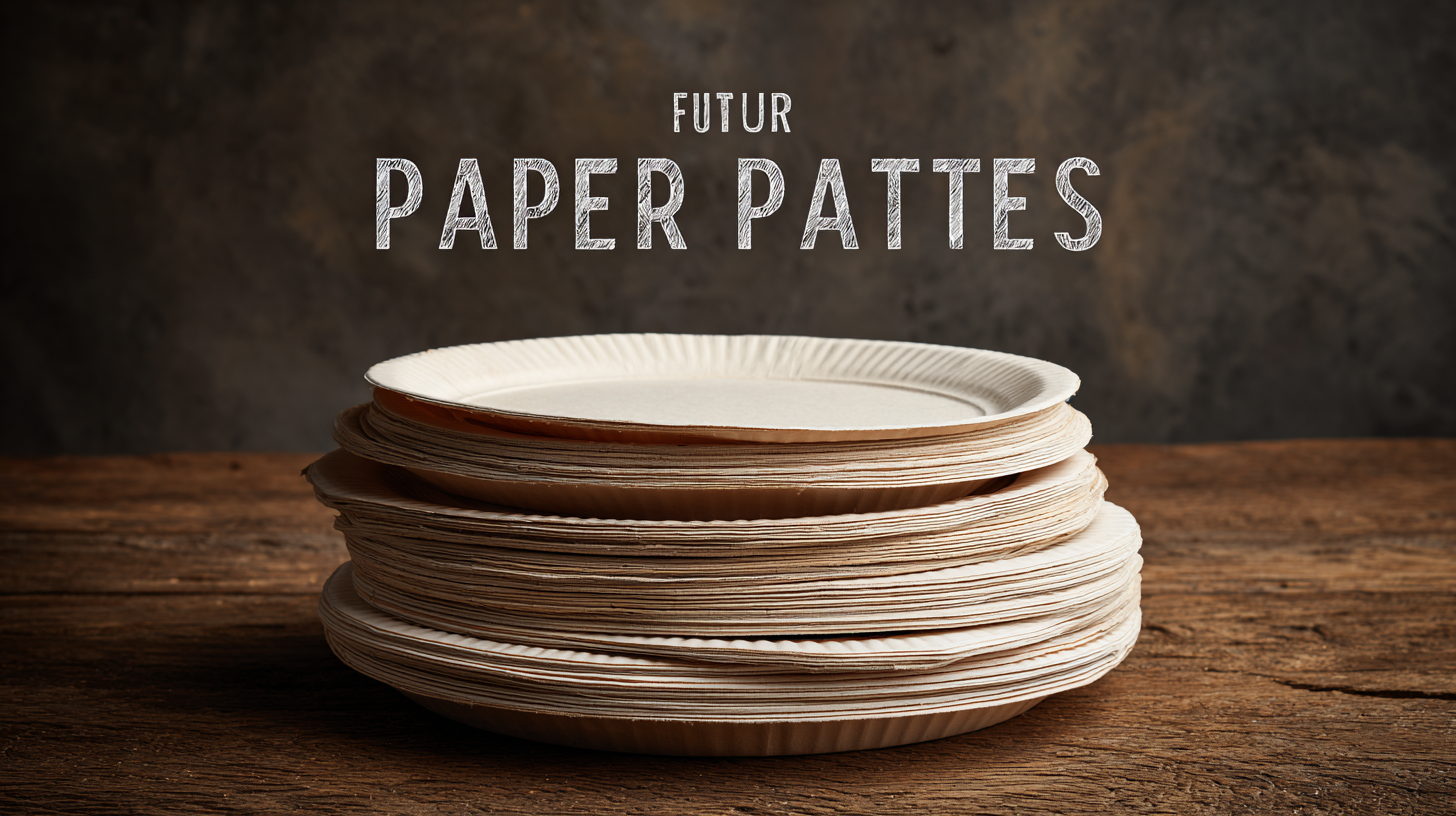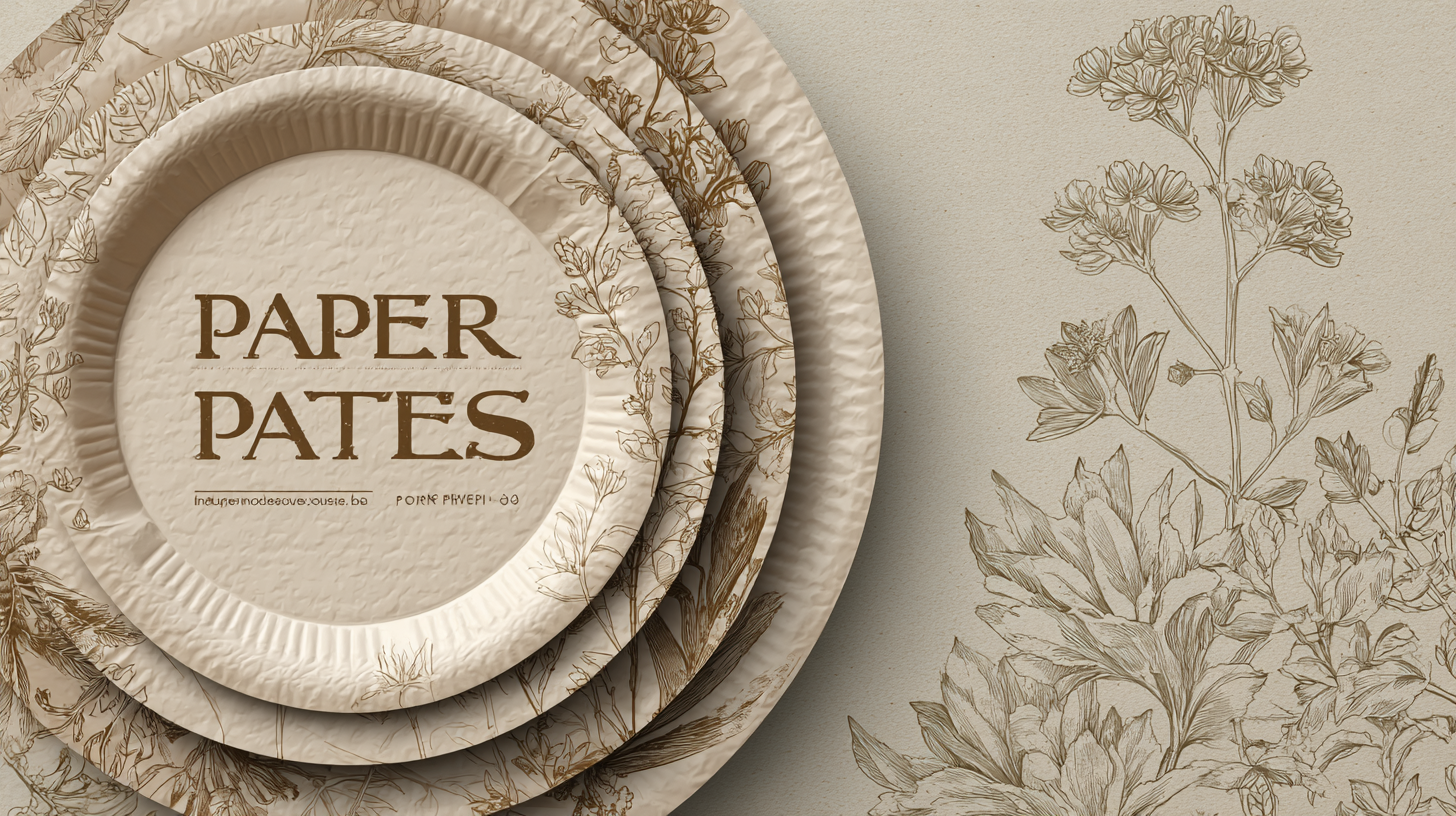Leave Your Message
The paper plates market is poised for considerable growth in the coming years, driven by increasing consumer preference for eco-friendly and disposable products. According to a recent market research report by Grand View Research, the global disposable plates market, which includes paper plates, is projected to reach USD 10.2 billion by 2025, growing at a CAGR of 5.4% from 2019 to 2025. This shift towards more sustainable options reflects broader trends in consumer behavior, with 74% of consumers expressing a willingness to pay more for products that are environmentally friendly. As manufacturers pivot towards innovation and sustainability, staying ahead in the paper plates industry will require strategic insights and adaptive strategies. This blog will explore the future of the paper plates market in 2025 and provide seven actionable tips for businesses to thrive in this competitive landscape.

As we look ahead to 2025, the paper plates market is poised for significant evolution, driven by changing consumer preferences and an increasing emphasis on sustainability. The rise in eco-consciousness among consumers is pushing manufacturers to innovate and produce biodegradable and compostable paper plates. By 2025, we can expect to see a wider variety of designs and functionalities, catering to both casual and formal dining experiences. New materials, coupled with advanced manufacturing technologies, will enhance the durability and aesthetic appeal of paper plates, making them a staple for an array of occasions.

Another trend on the horizon is the integration of digital technologies in the paper plates market. Online platforms for purchasing eco-friendly products will grow, offering convenience and a broader range of options for consumers. Social media campaigns will likely amplify this shift, as brands engage with their audience to promote sustainable practices. Additionally, collaborations between restaurants and paper plate manufacturers may emerge, encouraging the use of branded disposable tableware that aligns with a restaurant's identity while remaining environmentally responsible.
These market trends will reshape the landscape of the paper plates industry, urging businesses to adapt and thrive in a competitive environment.
The paper plates market faces numerous challenges as it navigates an increasingly eco-conscious landscape. One significant issue is the ongoing prevalence of single-use plastics despite regulations aimed at reducing their use. This situation not only increases competition for environmentally friendly products but also raises consumer awareness around sustainability. Market players must adapt by emphasizing the benefits of paper plates, such as their biodegradability and reduced environmental impact compared to plastics.
To stay competitive in this evolving market, businesses should consider implementing several strategies. First, invest in sustainable sourcing practices to ensure the materials used are environmentally friendly. Second, focus on innovation by developing new designs that enhance functionality and aesthetic appeal. Lastly, effective marketing campaigns that educate consumers on the environmental benefits of paper plates can help shift consumer preferences away from plastic options.
As we look toward 2025, understanding these challenges and embracing proactive solutions will be crucial for success in the paper plates market. By prioritizing sustainability and consumer education, companies can position themselves as leaders in this growing industry.
| Dimension | Data |
|---|---|
| Market Size (Global) | $5 Billion |
| Projected CAGR (2021-2025) | 4.5% |
| Main Challenges | Sustainability, Product Durability, Market Competition |
| Consumer Preference Shift | Increase in Eco-friendly Products |
| Emerging Markets | Asia-Pacific, Latin America |
| Tips to Stay Ahead (number of tips) | 7 |
| Innovation Areas | Biodegradable Materials, Design Improvements |
The future of the paper plates market is being shaped by the introduction of innovative materials that prioritize sustainability without compromising functionality. According to a recent report by the Market Research Future, the global biodegradable plates market is projected to grow at a CAGR of 5.8% from 2021 to 2027, driven by increasing environmental awareness and the demand for eco-friendly alternatives to conventional products. This shift is pivotal as manufacturers explore materials like bamboo, sugarcane, and even recycled paper that not only reduce waste but also enhance the strength and durability of paper plates.

Moreover, advancements in coating technologies are paving the way for water and oil-resistant paper plates, thereby expanding their usability. A study from Smithers Pira estimates that the market for sustainable disposable products, including paper plates, could reach over $6.5 billion by 2025. These innovations are not just beneficial for the environment; they also meet the growing consumer expectation for products that are both convenient and environmentally responsible. By staying informed about these trends and materials, businesses can position themselves to capitalize on the explosive growth in the sustainable paper plates market.
As the paper plates market evolves, businesses must embrace innovative strategic marketing approaches to secure a competitive advantage in 2025. First, understanding consumer preferences is crucial. Conducting market research to identify trends, such as sustainability and convenience, can inform product development and marketing strategies. Tailoring offerings to meet these needs could make brands stand out in a crowded market.
Additionally, leveraging digital marketing can significantly enhance visibility and engagement. Utilizing social media platforms to showcase eco-friendly products, sharing user-generated content, and initiating interactive campaigns can create a strong brand presence. Building partnerships with influencers in the sustainability space can also broaden reach and attract environmentally conscious consumers. By focusing on personalized experiences and effective use of technology, companies can effectively position themselves for success in the future of the paper plates market.
The bar chart below illustrates the projected market share of different types of paper plates by 2025. As shown, eco-friendly paper plates are expected to dominate the market, reflecting the growing consumer preference for sustainable products. Traditional paper plates will continue to hold a significant share but may see a decline in demand due to increased environmental awareness.
As the landscape of the paper plates market evolves, understanding consumer preferences becomes paramount. In recent years, there has been a notable shift in demand driven by increasing environmental awareness and a desire for sustainable products. Consumers are moving away from traditional plastic and foam plates, opting for biodegradable and compostable paper alternatives. This trend not only reflects a growing consciousness about waste management but also highlights a preference for products that align with eco-friendly values.
Moreover, the demographics of consumers are also changing the game. Younger generations, particularly Millennials and Gen Z, are showing a marked preference for sustainable packaging and disposable options that do not compromise on quality or style. They prioritize brands that embody these ideals, seeking out paper plates that are not only functional but also aesthetically pleasing for gatherings and events.
This shift in demand indicates an opportunity for manufacturers to innovate and cater to these new consumer expectations, ensuring they remain competitive in the market by embracing both sustainability and design in their product offerings.
